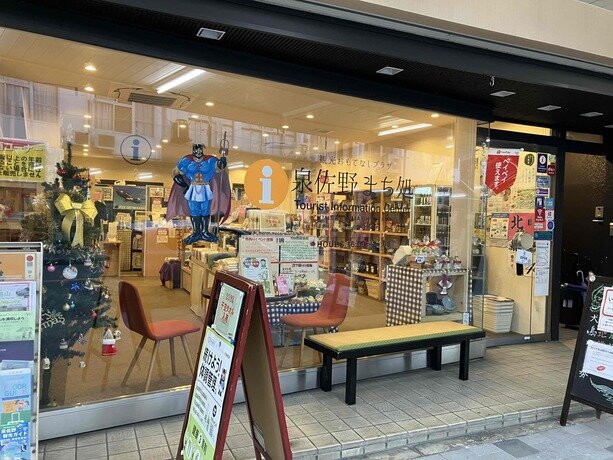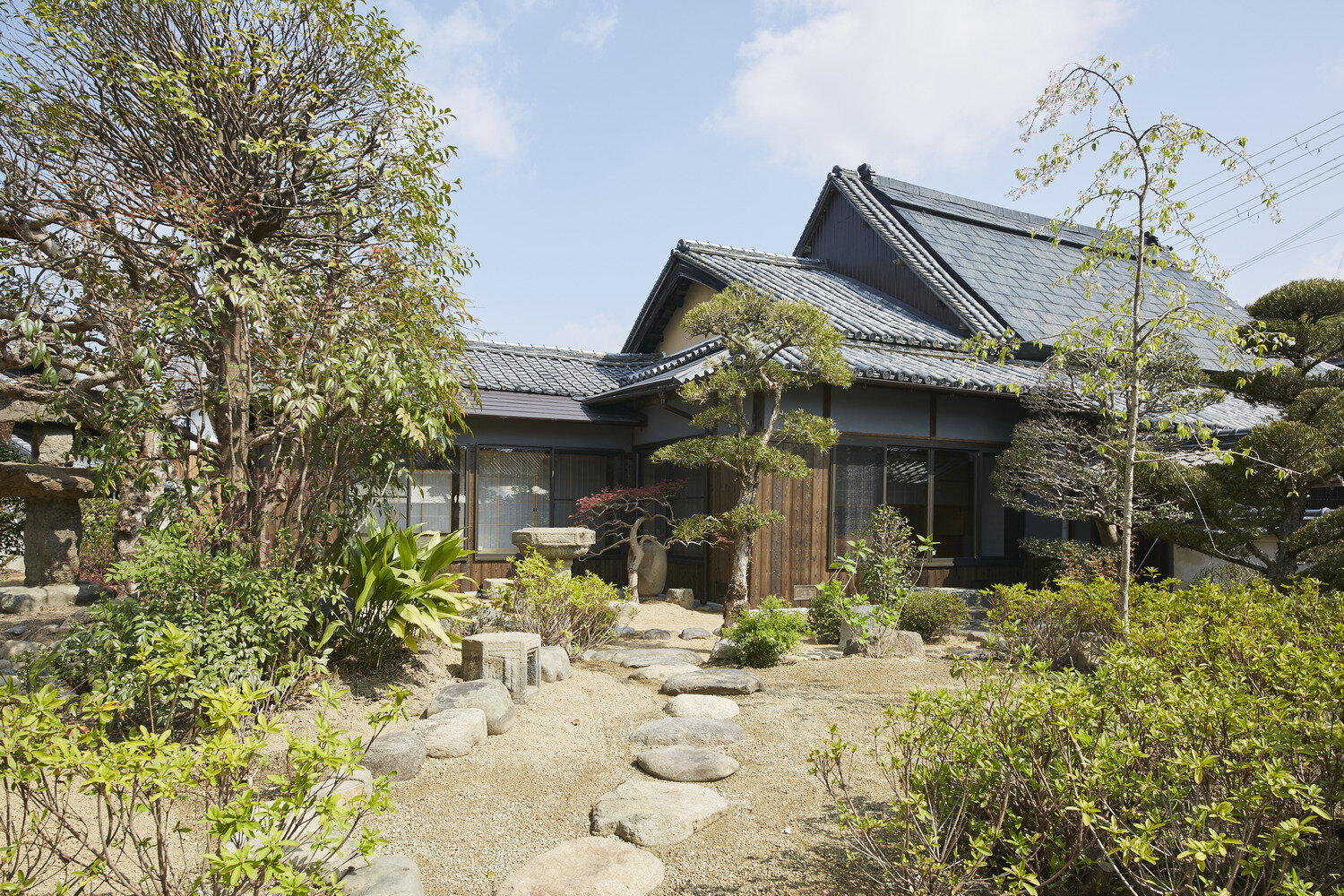
古人(いにしえびと)の祈りの道へ。熊野古道大阪ルート
熊野古道とは平安時代以降、貴族や庶民が願いを抱いて和歌山の熊野三山(熊野本宮大社、熊野速玉大社、那智大社)を目指した参詣の道のこと。大阪と熊野を結ぶ紀伊路、三重県の伊勢と熊野を結ぶ伊勢路、高野山を超える高野道など各地からのルートは様々だがどれも険しいものばかり。京からの紀伊路は往復約1ヶ月、距離にして約600kmだった。しかし、"熊野へ参るには紀路と伊勢路のどれ近し、どれ遠し。広大慈悲の道なれば紀路も伊勢路も遠からじ(梁塵秘抄)"とあるように、決して苦しみばかりではない、大切な救いの道だったのだろう。さて、紀伊路の陸路のスタート地点といえば大阪天満橋近くの八軒家船着場あたり。市街には四天王寺を経て阿倍野、住吉大社までの古道の道筋が道標とともに残り、旅心を誘ってくれる。願いを込めて、21世紀の古道を歩こう。
-
START
OSAKA METRO 天満橋駅
-
徒歩3分八軒家船着場

京都から船で下ってきた一行は、古くは渡辺津と呼ばれたここ天満橋付近で上陸し、最初に浜の後方の窪津王子に詣ったあと、熊野を目指して歩き始めたという。江戸時代には三十石船が行き来し、人ともので大いに賑わった界隈。今は護岸整備が行なわれており、新しい水都の拠点となる予定だ。京阪天満橋駅西側の道にある永田昆布店の店先に、八軒家船着場跡の碑が静かにたたずむ。八軒家船着場跡から南へ。北大江、中大江、南大江と3つの公園を過ぎて長堀通りに出たところを東へ行くと上汐筋の古道ルートに繋がる。ここから目指すは四天王寺。古道の道標がところどころに立っているので注意深く歩こう。電車の場合は八軒家船着場跡から再びOsakaMetro天満橋駅に戻り、谷町線で四天王寺前夕陽ケ丘駅へ。徒歩約3分で四天王寺着だ。
スポットを見る徒歩約15分電車約15分 -
四天王寺

四天王寺は聖徳太子が建立した日本最古の官寺。いくつかの門の中でも"西大門"は彼岸の中日、大阪湾に沈む夕陽が丁度、門の向こうに見えるため、西方極楽浄土を願う庶民の信仰を集めた。この門は別名、極楽門というとか。鐘の音に耳を澄まし、雑念を追い払ってしばし合掌...。四天王寺から天王寺へ徒歩約15分。OsakaMetro谷町線四天王寺夕陽ヶ丘駅から一駅。天王寺の巨大ターミナルに到着したら、大阪で唯一のチンチン電車・阪堺電気軌道でガタゴトと揺られて行こう。
スポットを見る阪堺電気軌道 松虫駅下車 約7分 -
松虫塚

車の多い阿倍野筋の大通りから、民家の軒をかすめる細い線路に入ってすぐ、チンチン電車の『松虫』駅で降りて、木津川-平野線の広い道路を西へ100mほど行くと、松虫塚がある。大阪市の道路計画で削られる寸前、地元の人たちの強い要望で残ったとか。松虫とは"鈴虫"を指すそうで、美しい音色で鳴き、 短い命を落とした虫達を旅人が哀れに思い、この塚を建てたと伝えられている。塚の傍らに立つ樹齢800年の榎の大樹も、長い年月、熊野詣の人々を見守ってきたのであろうか...。駅へ戻り、細い道を行くと"熊野かいどう"の道標に出会えた。安倍晴明神社を目指す。
徒歩約15分 -
安倍晴明神社

八軒家船着場から7キロ余り、熊野街道沿いにある阿倍晴明神社。平安時代、6人の天皇に仕えた天才陰陽師・安倍晴明の生誕地とされ、創建は清明が亡くなった2年後の1007年(寛弘4年)と伝えられている。そもそも陰陽師とは? 中国伝来の陰陽五行説(いんようごぎょうせつ)によって天体観測や暦を作成した自然科学者とも、吉凶を占い、神を操る呪術師とも言われる不思議な存在だ。「陰陽師」の小説や映画のヒットで占い発祥の地としても人気の神社だが、境内は楠や銀杏の大木が茂り、昼でも薄暗い雰囲気。ちょっぴりドキドキ。
スポットを見る徒歩約2分 -
阿倍王子神社

阿倍清明神社から南へ徒歩約2分歩くと、阿倍王子神社。仁徳天皇の創建とも言われ、熊野詣が盛んだった頃、熊野古道沿いの「王子」として参詣者で賑わっていた。王子とは?八軒家から熊野までの紀伊路沿いに設けられていた遙拝所、いわば休息の場のこと。数多くの王子があったことから"九十九王子"と呼ばれている。ここの境内にも大木が多くあるが、蟻の熊野詣とも呼ばれた昔も、旅人を癒す木陰はあったのだろうか?静かな境内でそんなことをふと、思ったり...。阿倍王子神社から再び上町線の線路敷きに広い道を南へ下る。健脚自慢なら歩いて。乗りもの好きならチンチン電車の「姫松駅」から「手塚山三丁目」、「帝塚山四丁目」と揺られても楽しい。
スポットを見る阪堺電気軌道で約10分 -
住吉大社

阪堺電気軌道「住吉駅」または「住吉鳥居前駅」で下車すると、目の前は住吉大社。「すみよっさん」の愛称と朱塗りの太鼓橋で知られ、毎年の初詣の人出は関西で一、二を争う人気の神社だ。古代は大社のすぐ近くまで海が迫り、風光明媚なことから"清江(すみのえ)"とも呼ばれたとか。国家鎮護、航海守護などの神として今も信仰を集めている。檜皮葺妻入り式切妻構造の美しい本殿は住吉造と呼ばれ、国宝指定。広大な境内には大阪や堺の商人が家業繁栄を願い、寄贈した600以上の石灯籠も並び、壮観だ。
スポットを見る - GOAL!
追加情報
- 味わいスポット
- 「いつもおまめな豆ごはん」がキャッチフレーズの名物店・廣田
- お土産
- 住吉大社の招福猫、池田屋本舗の住之江味噌。















